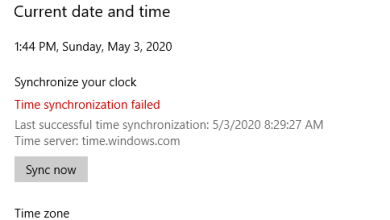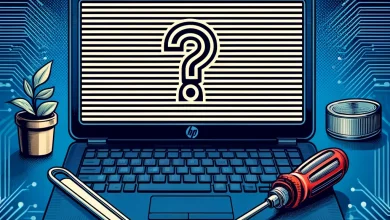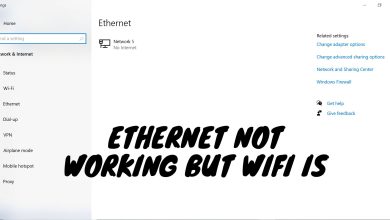Troubleshoot Blue Screen of Death (BSOD) Caused by Windows Update
The Blue Screen of Death (BSOD) is a critical system error that can occur in Windows which is often caused by a system crash or a software issue, and can result in the loss of unsaved data and forced shutdown of the computer. In some cases, it can occur when a Windows update has gone wrong, resulting in system instability that triggers the BSOD.
This can happen when the update is buggy or has gotten corrupt because of missing some essential files required to install the update during the download process.

We have discussed different troubleshooting methods that you can try to fix the problem, below. Proceed with the method that fits your situation the best.
Before You Begin
The troubleshooting methods we have mentioned in this guide require access to the system. If you cannot access the system at all because of the crashes, then you must first boot into the Windows Recovery Environment.
In Windows, the Recovery Environment (WinRE) is a bootable system repair tool. It helps troubleshoot and repair problems with the operating system, including crashes, boot failures, and other problems preventing Windows from working properly.
There are several features available in the WinRE environment, such as System Restore, Automatic Repair, Command Prompt, and more. You can access it by booting from a Windows installation media (such as a DVD or USB drive) or by using the Settings app’s Advanced Startup Options.
Once you have booted into the Recovery Environment, proceed with the troubleshooting methods one by one.
1. Perform a System Restore
Since the blue screen of death is being caused due to a faulty update, the first thing that we recommend you do is perform a system restore, which will revert the system back to a stable state.
This feature creates snapshots of the system called restore points. These restore points contain information about the system configuration, settings, and installed software, among other things. When you pick a restore point, the system is rolled back to the state it was in when the selected restore point was created, resolving problems like the one under consideration.
Here is how you can use this feature:
- In the Recovery Environment mode, navigate to Troubleshoot > Advanced options.

Selecting Advanced Options - Click on System Restore from the list of options available.
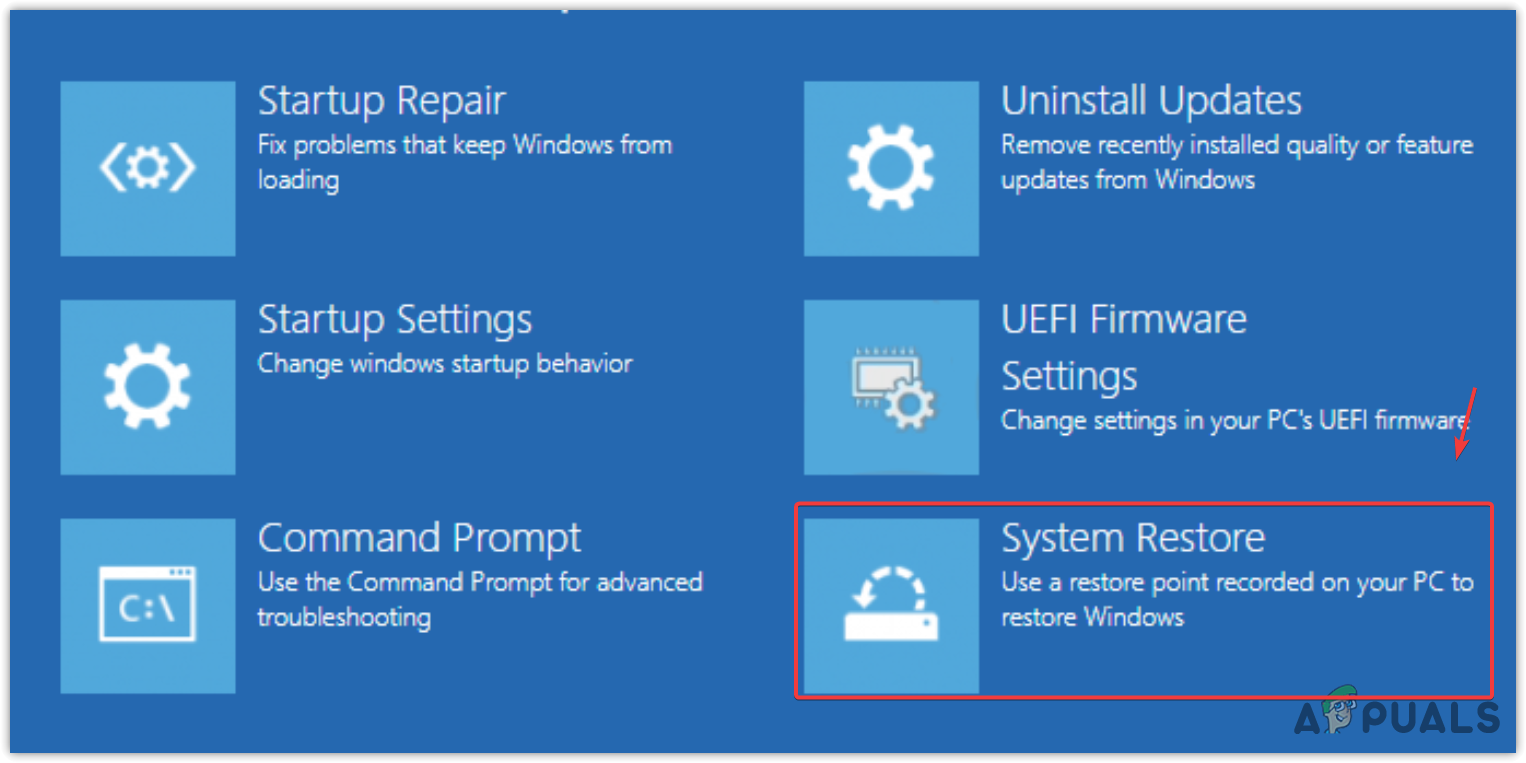
Opening System Restore utility from Windows recovery environment - Click Next in the following dialog.
- Now you should be able to see the list of restore points that have been created on the system. Choose one restore point and follow the on-screen instructions to complete the procedure.

Deploy a system restore
2. Uninstall the Faulty Update
If you are not comfortable using the System Restore feature and would like to get rid of the faulty update only, you can do that as well using the Windows Recovery Environment.
Here is how you can proceed:
- In the Advanced options screen of WinRE, click on Uninstall Updates.
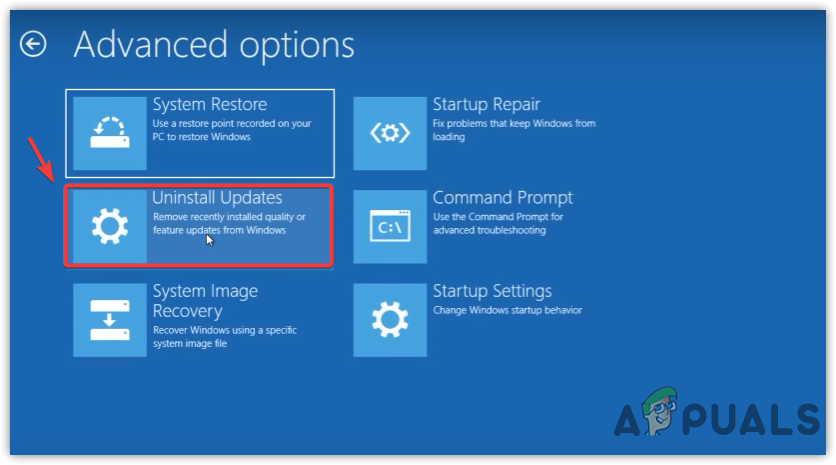
Proceeding To Uninstall Windows Updates - You will be able to see two options now; Uninstall latest quality update and Uninstall latest feature update.
Choose the appropriate option and follow the on-screen instructions to proceed.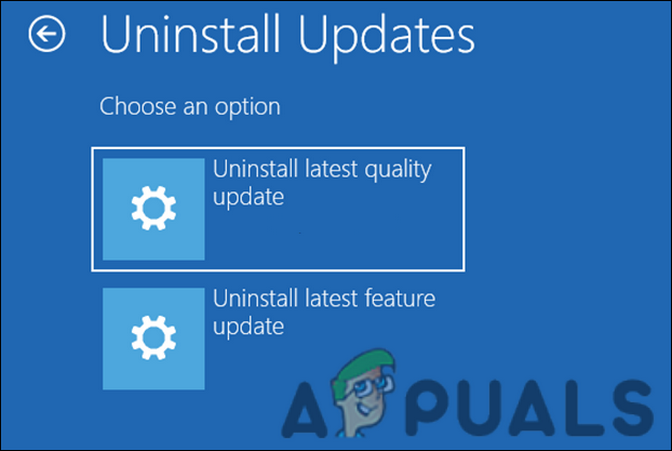
Uninstall an update - Once the update has been uninstalled, check if the issue is resolved.
Alternatively, you can use the Command Prompt to uninstall the faulty update as well. Here is how:
- Choose Command Prompt in the Advanced options screen of WinRE.
- Type the following command in the Command Prompt window and hit Enter. Your PC will display a list of Windows updates you have installed with this command.
wmic qfe list brief /format:table

Check the installed updates - Each update will have a corresponding ‘HotFixID’. Make a note of the one for the update you wish to uninstall.
Now type the following command in Command Prompt and hit Enter. Make sure you replace ‘HotFixID’ with the ID that you saved earlier.wusa /uninstall /kb:HotFixID
You will see a confirmation box on your screen. Select Yes to proceed.
3. Run System Scans
The next thing that we recommend doing is running system scans using System File Checker (SFC) and Deployment Image Servicing and Management (DISM).
The SFC program scans all the system files on the computer and compares them to known good versions in a database. Whenever a corrupted or missing file is detected, it replaces it with the correct version. This can help resolve BSOD issues caused by system file corruption.
A DISM, on the other hand, repairs a Windows image, which includes all the files, drivers, and packages within a Windows installation. If a BSOD is caused by a damaged system image, running DISM can help resolve the issue.
Here is how you can run these utilities:
- Choose Command Prompt in the Advanced options screen of WinRE.
- Type the following command in the Command Prompt window and hit Enter. The scan will take several minutes to complete.
sfc /scannow
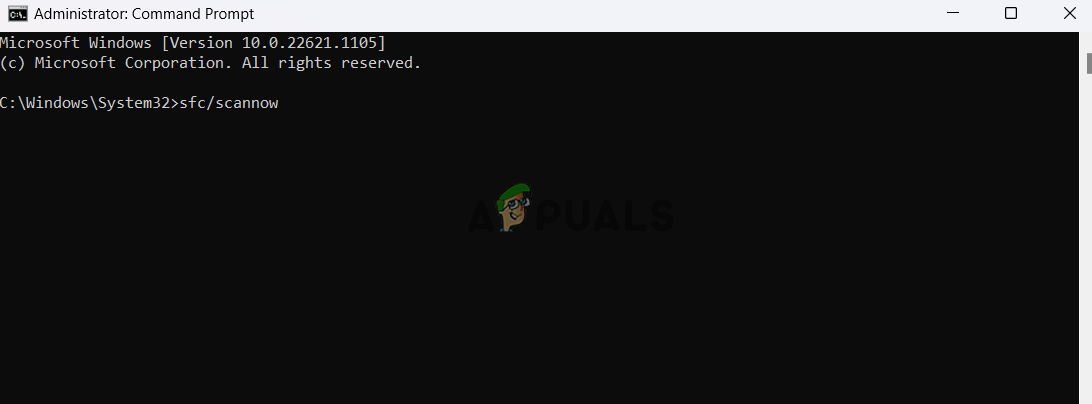
Type sfc/scannow command - Once the command is executed, proceed with the following command:
dism /online /cleanup-image /scanhealth
- If DISM reports any issues, execute this command:
dism /online /cleanup-image /restorehealth

Deploying a DISM scan
It will take several minutes for the repair to be completed. Once the command is executed successfully, restart your computer and check if the BSOD still occurs.
4. Update Drivers
Outdated drivers can also cause BSOD after installing a system update.
A new system update may change the configuration of the system in a way that may conflict with existing drivers, especially if the drivers are outdated. For instance, new system updates may add security features or change the way certain components interact with each other, which can cause compatibility issues with older drivers.
A driver may also cause problems if it is designed to handle certain types of system events or conditions in a certain way, but those conditions or events change when the system is updated.
Whatever the situation might be, these types of issues can typically be fixed by updating the drivers. Here is how you can do that:
- Boot Windows Into Safe Mode.
- Type Device Manager in the search area of the taskbar and click Open.
- Expand the driver sections and look for any warning signs with the drivers. This sign indicates that the driver is either corrupt or outdated.
- Right-click on the faulty driver.
- Choose Update driver from the context menu and select the Search automatically for drivers option. Now, Windows will search for and install updated drivers.
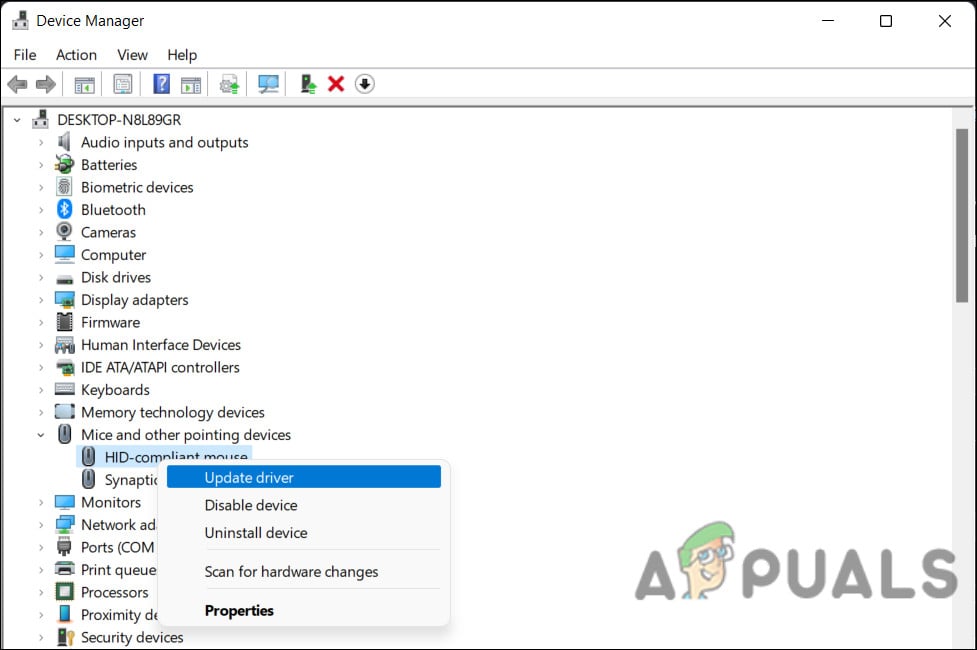
Update the mouse driver - Follow the on-screen instructions to proceed.
- Update all the outdated drivers this way and then restart your computer.
5. Reset Windows
If none of the methods above have worked for you, you can try resetting Windows as the last resort.
When you reset Windows, it essentially reverts to the default system state, while preserving your personal files and settings. Unlike a clean install of Windows, this process retains your personal data and settings, making it faster and easier. This can help resolve any problems caused by the system update, including BSOD issues.
